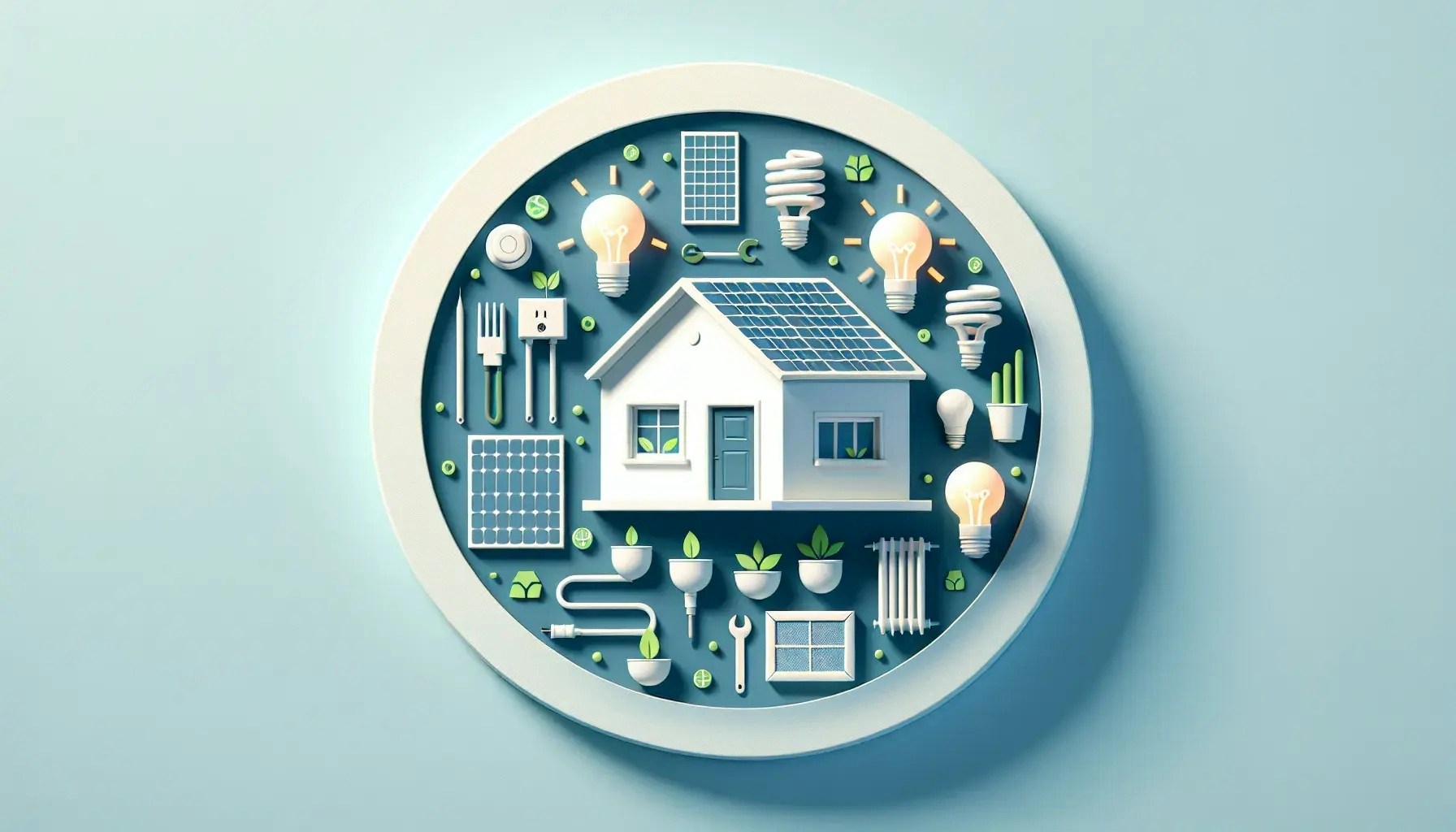Eco-Friendly Home Improvement Tips
Best of Home & Garden

Welcome to our comprehensive guide on eco-friendly home improvement tips. As we all strive to reduce our carbon footprint, it's essential to consider how our homes can contribute to this goal. This guide will provide you with practical and easy-to-implement tips to make your home more environmentally friendly. We'll explore various aspects of home improvement, from energy efficiency to sustainable materials, and how you can incorporate them into your home.
"Energy Efficiency: The Heart of an Eco-Friendly Home"
Energy efficiency plays a crucial role in creating an eco-friendly home. It not only reduces your energy consumption but also significantly cuts down your utility bills. Let's delve into how you can improve your home's energy efficiency.
Insulation is a key factor in energy efficiency. Proper insulation in your home can significantly reduce the amount of energy needed for heating and cooling. Consider using insulation materials like cellulose, which is made from recycled paper and is a great eco-friendly alternative to traditional fiberglass insulation.
Upgrading your appliances to energy-efficient models is another effective way to improve energy efficiency. Look for appliances with the Energy Star label, which signifies that they meet the energy efficiency standards set by the Environmental Protection Agency (EPA).
Lighting also plays a significant role in your home's energy consumption. Switching to LED lights can drastically reduce your energy usage, as they use up to 80% less energy than traditional incandescent bulbs. Moreover, they last longer, reducing the need for frequent replacements.
"Sustainable Materials: Building an Eco-Friendly Foundation"
The materials you use in your home improvements can significantly impact your home's environmental footprint. Opting for sustainable materials is a great way to ensure your home improvements are eco-friendly.
Bamboo is a fantastic sustainable material for flooring. It's a fast-growing plant, which makes it a renewable resource. Plus, it's durable and gives your home a unique, modern look.
Recycled metal and plastic are other great options for sustainable materials. They reduce the demand for new materials and help decrease the amount of waste that ends up in landfills.
When it comes to paint, opt for low or zero VOC (volatile organic compounds) paints. Traditional paints often contain harmful chemicals that can pollute the air in your home. Low VOC paints are a healthier and more eco-friendly alternative.
"Water Conservation: Every Drop Counts"
Water conservation is an often overlooked aspect of eco-friendly home improvement. However, it's an area where small changes can make a big difference.
Installing low-flow fixtures in your bathrooms and kitchen can significantly reduce your water usage. These fixtures use less water per minute than standard ones, without compromising on performance.
Rainwater harvesting is another excellent way to conserve water. By collecting and using rainwater for things like watering your garden, you can reduce your reliance on municipal water.
Additionally, consider replacing your old appliances with water-efficient models. For instance, a water-efficient dishwasher uses less than half the water of washing dishes by hand.
"Landscaping: Greening Your Outdoor Space"
Your outdoor space is just as important as your indoor space when it comes to eco-friendly home improvement. Sustainable landscaping can enhance your home's aesthetic appeal while also benefiting the environment.
Planting native plants is a great way to create a sustainable landscape. These plants are adapted to your local climate and soil conditions, which means they require less water and care than non-native plants.
Composting is another excellent way to improve your landscape's sustainability. By composting your kitchen and yard waste, you can create nutrient-rich soil for your garden, reducing the need for chemical fertilizers.
"Solar Power: Harnessing the Sun's Energy"
Solar power is a clean, renewable source of energy that can significantly reduce your home's carbon footprint. While the initial investment can be high, the long-term savings on your energy bills can make it a worthwhile investment.
Installing solar panels on your roof is the most common way to harness solar energy. These panels convert sunlight into electricity, which can power your home.
Solar water heaters are another great way to utilize solar energy. They use the sun's energy to heat water, which can then be used for showers, washing dishes, and more.
"Smart Home Technology: The Future of Eco-Friendly Living"
Smart home technology can help make your home more eco-friendly by automating and optimizing various aspects of your home's operations.
Smart thermostats, for instance, can learn your schedule and preferences, adjusting your home's temperature accordingly to save energy. Similarly, smart lighting systems can automatically turn off lights when no one is in the room.
Smart irrigation systems can optimize your water usage by adjusting watering schedules based on weather forecasts and soil moisture levels. This can help you conserve water while ensuring your plants get the water they need.
"Embrace a Greener Lifestyle with Eco-Friendly Home Improvement"
As we've explored, there are numerous ways to make your home more eco-friendly through home improvement. From energy efficiency to water conservation, each aspect offers unique opportunities to reduce your environmental impact. While it may seem daunting at first, remember that every small step counts. Start with one area, and gradually incorporate more eco-friendly practices into your home. Before you know it, you'll have transformed your living space into a green, sustainable haven.